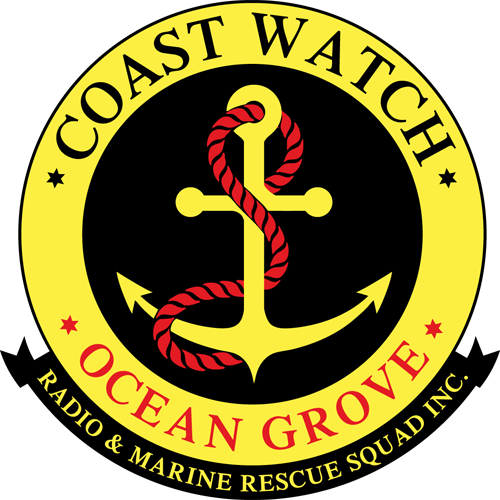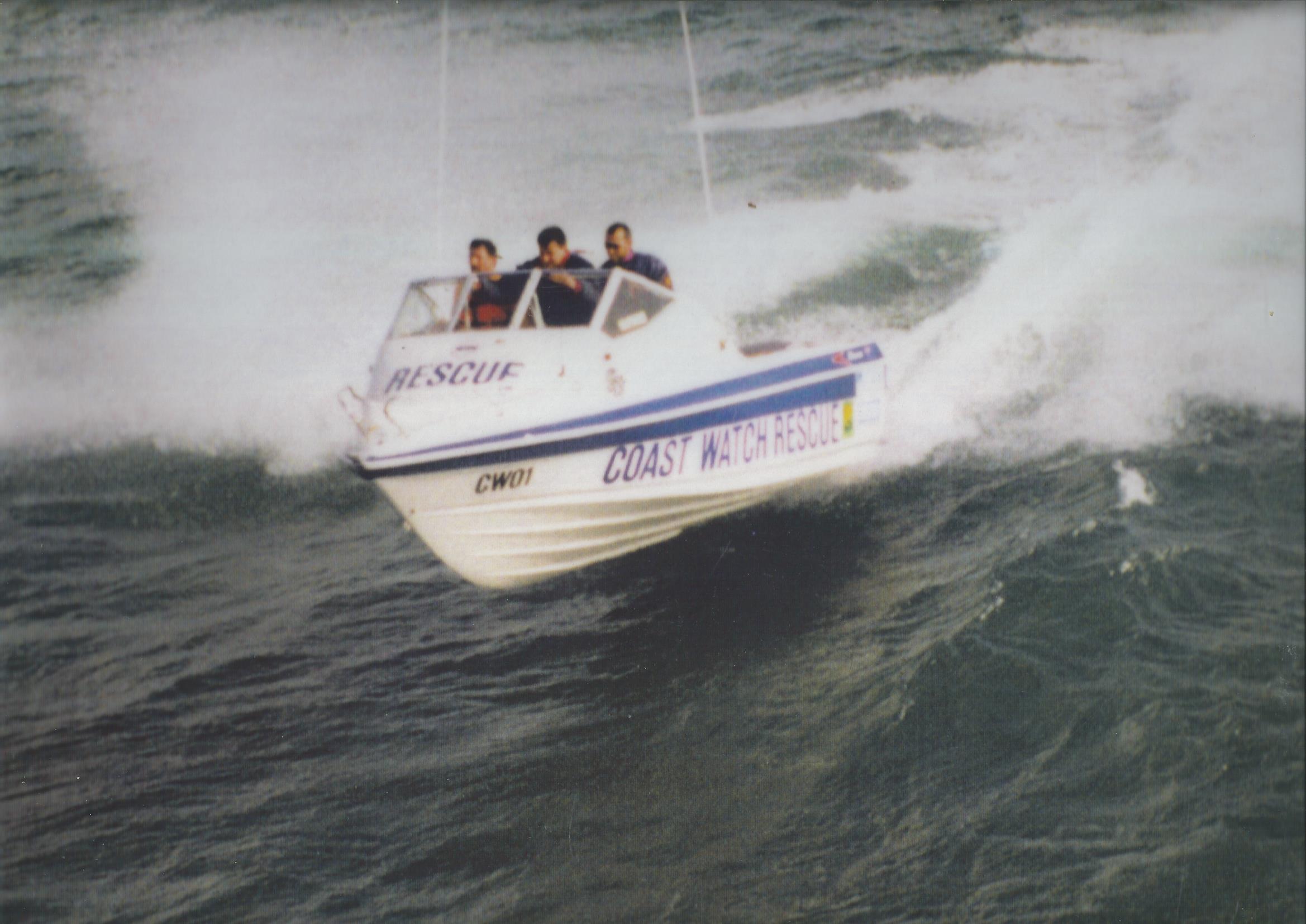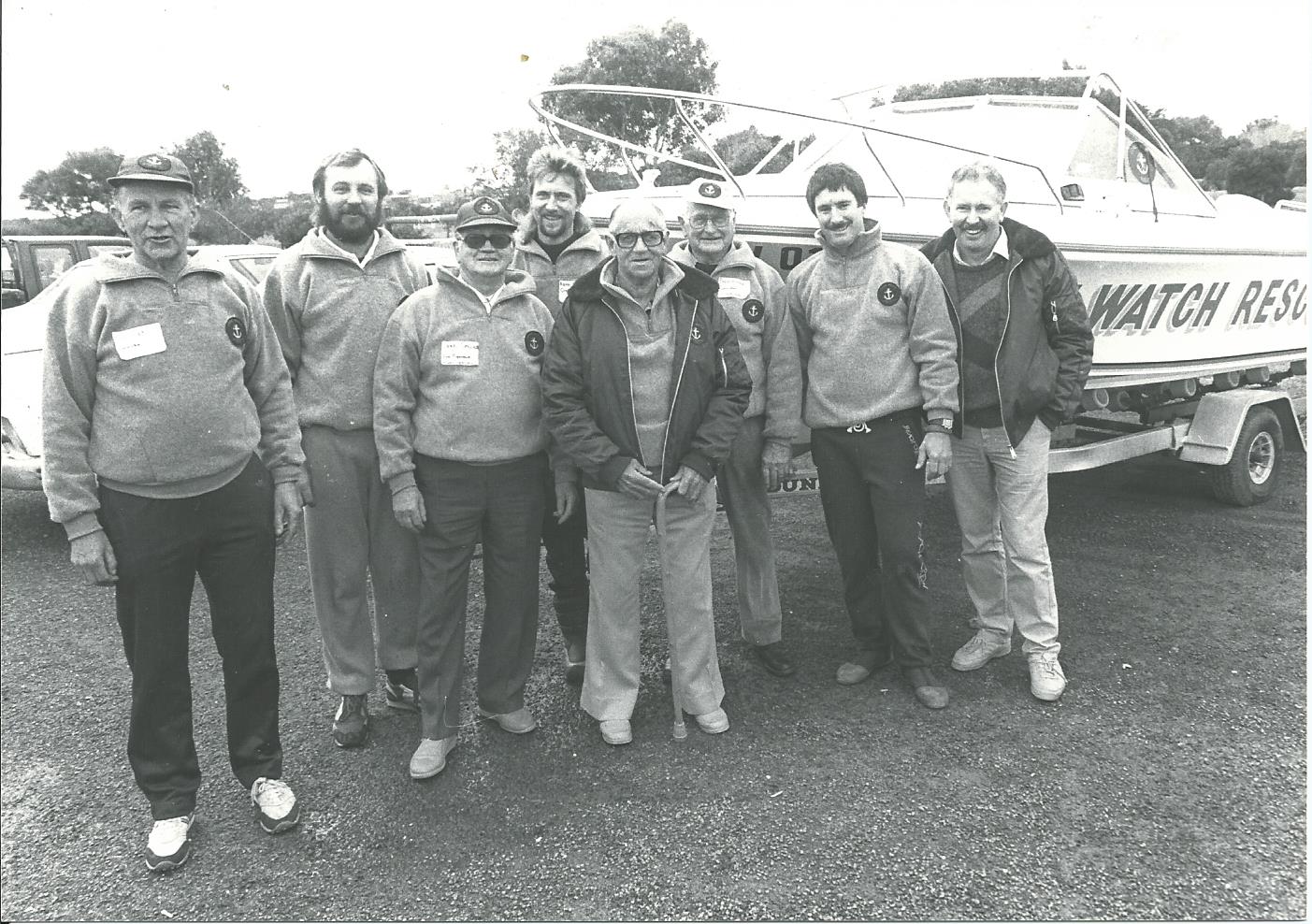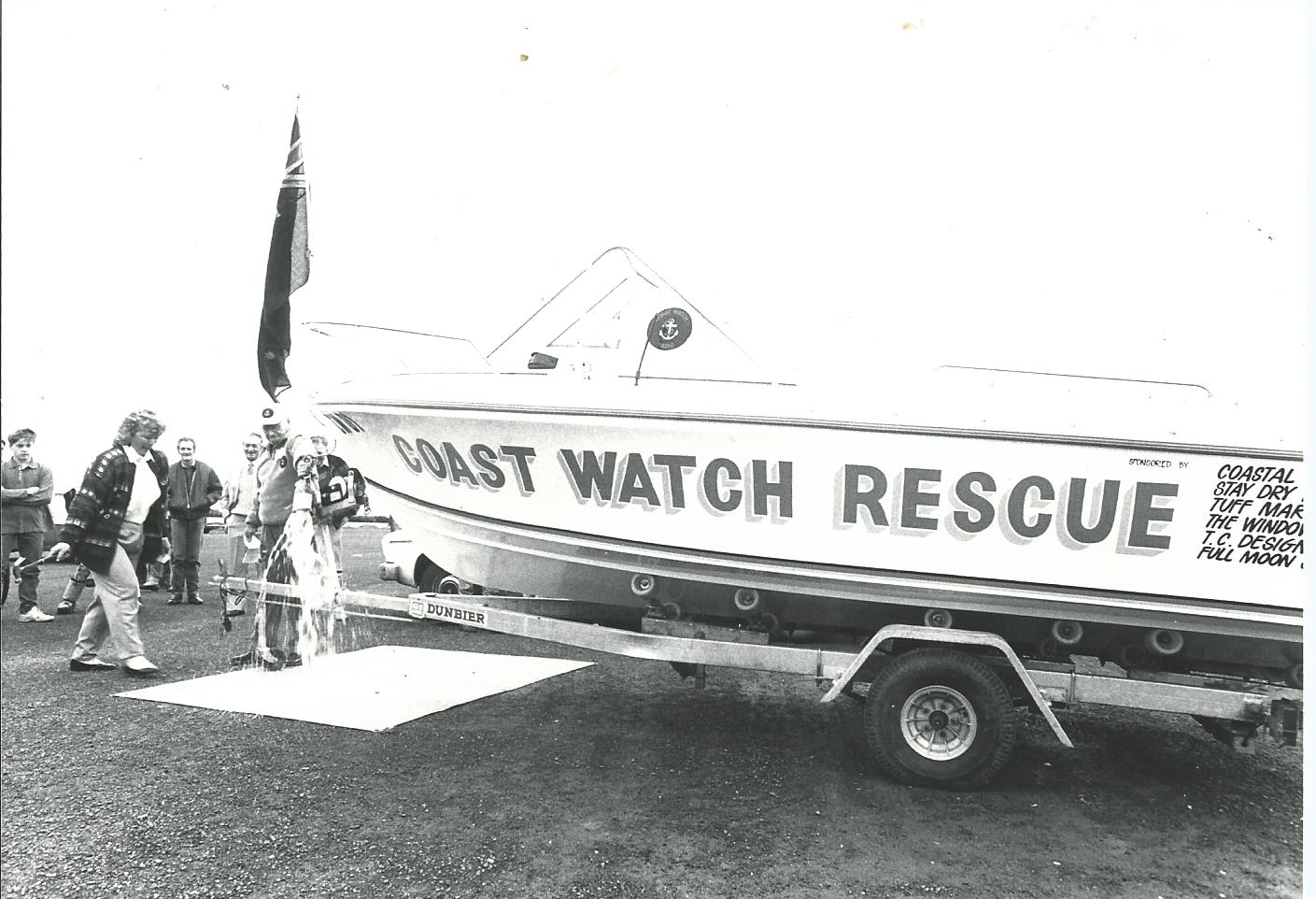Over the years that Coast Watch has been operating, there have been many changes to its role and structure, often brought about by advances in technology, government regulation and the changing needs of the community.
At one time there was virtually no emergency assistance available to seafarers off the Victorian coast, and if you got into difficulties you had to rely on help from other vessels in the vicinity or hope to save yourself. As a result there were many tragedies and lives lost. In 1975 a group of professional fishermen and abalone divers formed Coast Watch Radio and Marine Rescue Squad Ocean Grove to assist each other while at sea. Also, at that time marine radios had to be licensed and Coast Watch was authorised to collect the licence fees from local operators and allocate a call sign which was then registered with the Department of Communications. This allowed licensed operators to use radio base stations around the coast to communicate with each other, receive weather reports and, when necessary, call for assistance.
The early role of Coast Watch was to operate a series of these radio base stations and this was done by volunteers using equipment set up in their own homes. Calls for emergency assistance at sea were usually handled by other volunteers in their own boats and vehicles. The demand for marine rescue services increased, and in 1984 Coast Watch raised the funds to purchase a second hand boat and equip it for marine rescue work. This was moored in the Barwon River for rapid response, but unfortunately maintenance and repair costs became too expensive and Coast Watch was forced to sell it in 1986 due to lack of funds. For the next three years Coast Watch returned to its former role as a marine radio service. However, there was still the need for a rescue boat in the Ocean Grove / Barwon Heads area and by June 1989 Coast Watch had again raised sufficient funds to launch its new rescue boat, a 5.5 metre Caribbean named the Sir Gordon
The membership numbers had also expanded, due mainly to the requirement to licence marine radios.
As times changed, marine radios were gradually replaced by mobile phones and the need for radio operators and base stations dropped. At the same time the popularity of recreational boating surged and the number of incidents requiring urgent assistance increased accordingly. Coast Watch evolved to become a rapid response rescue service that could provide that assistance on the water. Several years later the Caribbean rescue boat was replaced by a 5.5 metre Savage Mako with a 140 hp Suzuki engine that was better suited to our requirements, and in 2009 we again upgraded our vessel to a 7.3 metre Gemini Interceptor, powered by twin 150 hp Yamaha outboards. This gave us stability, speed and agility as well as towing power and long range capability.
In the past, we have received some financial assistance from various Government agencies and local community organisations to help buy boats and vehicles, and train our members. However, the squad has remained largely self funded and our members have contributed many hours of their time running crayfish raffles and BBQs at Bunnings to keep the squad going. In late 2017 the Victorian Government announced that it would provide significant funding over the next two financial years to assist volunteer marine search and rescue organisations such as Coast Watch. While it won’t cover all of our costs, we are grateful for this support and it will provide us with greater financial security.
Over the years that Coast Watch has been operating we have carried out many rescues and saved many lives. We have responded to everything from motor failures and running out of fuel, to vessel capsize, fires, plane crashes and searches for bodies – all in an unpaid and voluntary capacity. The ongoing training that our members receive, together with their knowledge and experience of the river at Barwon Heads and the entrance to the open sea have enabled Coast Watch to safely perform operations in all types of conditions, including after dark.
We hope that the next generation will continue the good work.




